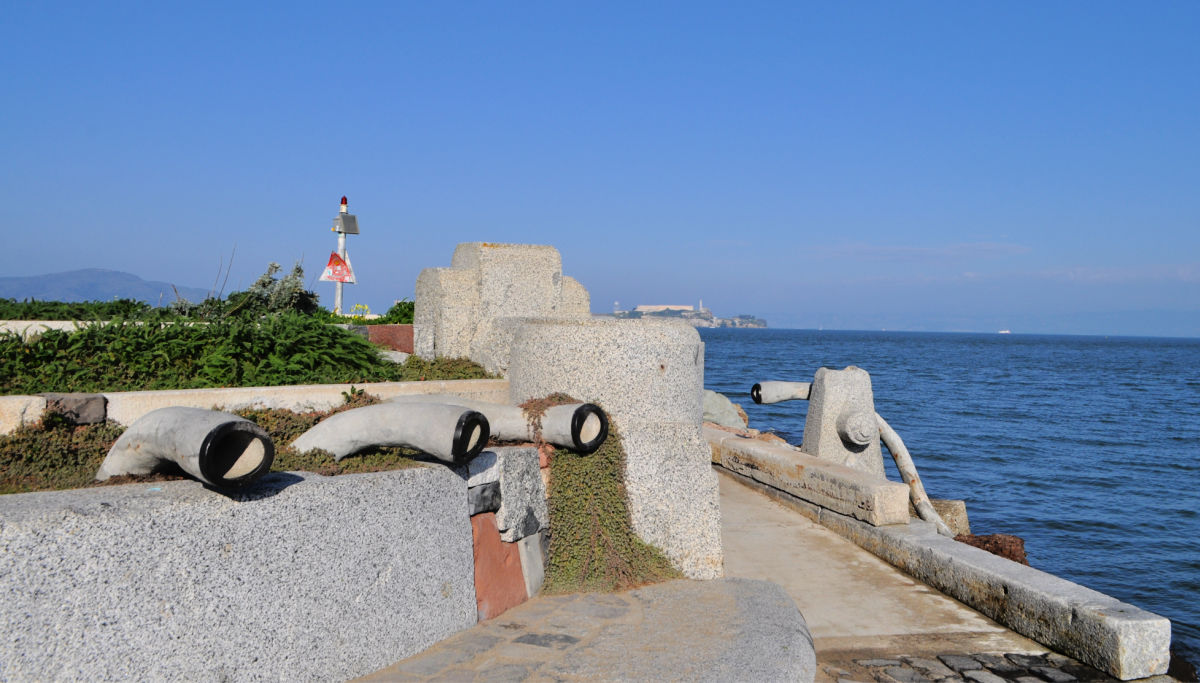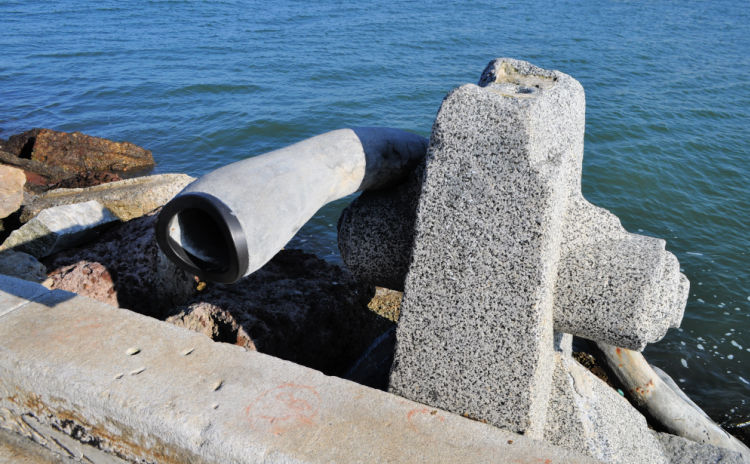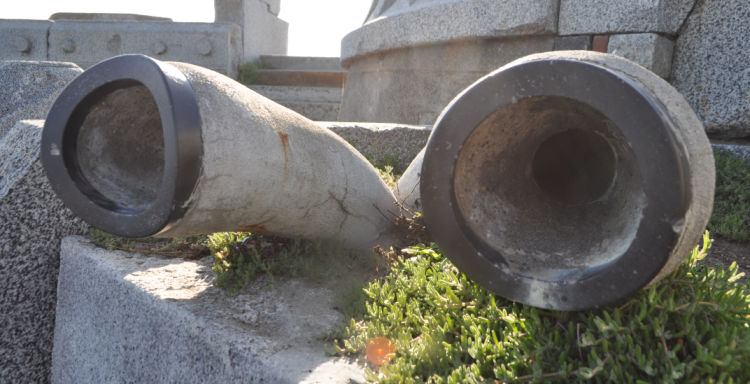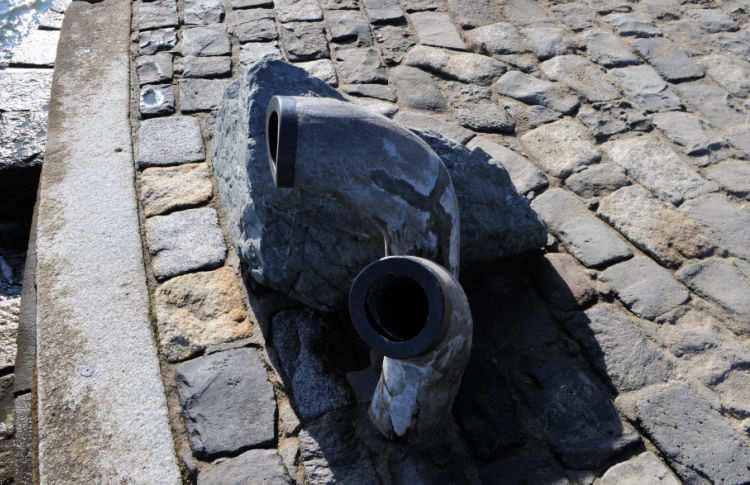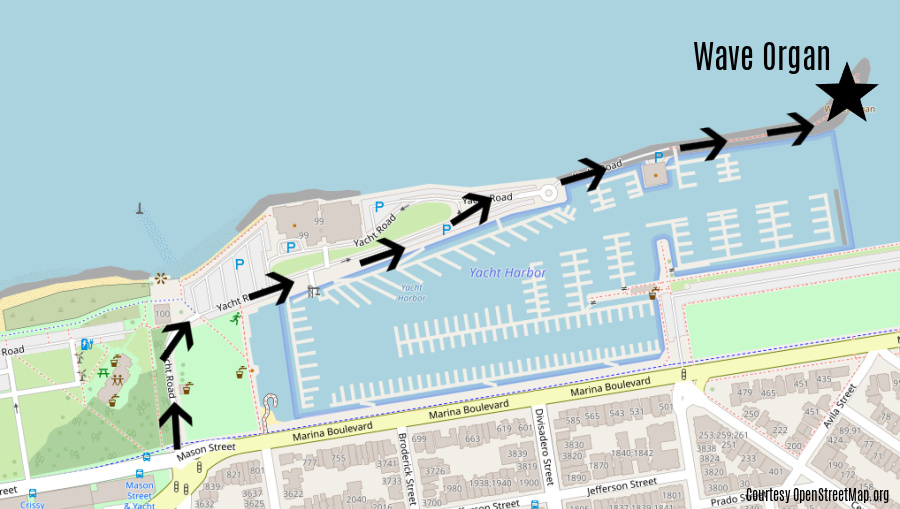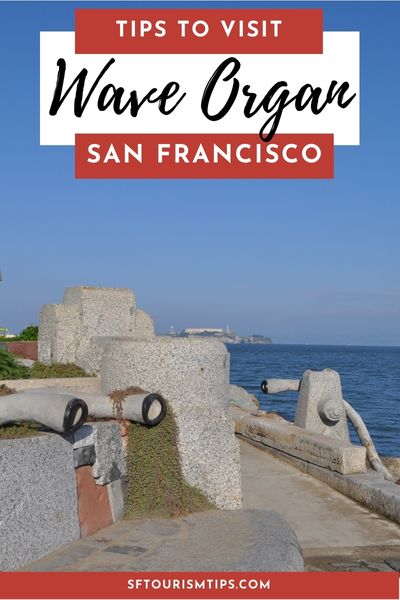SIGN UP FOR MY EMAIL TO RECEIVE YOUR FREE SAN FRANCISCO PLANNING GUIDE.
- Home
- Attractions
- Wave Organ
The Wave Organ in San Francisco: Tips to Visit
By: Jill Loeffler • Updated: August 24, 2025
The Wave Organ in San Francisco is an outdoor acoustic art piece activated by the waves from the SF Bay. It includes 25 organ pipes of differing sizes. This allows this work of art to create a variety of sounds as the wave crash against it.
This wonderful, free attraction in San Francisco's Marina District is hidden at the end of a jetty near Crissy Field Recreational Area, the Marina Green, and the St. Francis Yacht Club.
The last time I visited, I ran into a family member of the artist that created it! It was her first time visiting, and it was fun to meet someone with a personal connection to the artist.
Jill's Things to Know Before You Visit
When to Visit: This free attraction is always open, but it's best enjoyed at high tide, when the waves make more intense sounds in the pipes.
How Long to Stay: Most people spend just a few minutes here, but you could bring a picnic (if it's not too windy) and just take your time at this tranquil spot. It's well worth the 15-minute scenic walk over from Crissy Field Beach or the Palace of Fine Arts.
Panoramic Views: This is a quiet, hidden spot, allowing visitors the perfect setting to soak in unobstructed views of the Golden Gate Bridge, Sausalito, and Alcatraz.
Scenic Location: Enjoy this area on a great waterfront/bay tour.
SFTourismTips is made possible by readers like you! If you book through my links, I may earn a small commission at no extra cost to you. Thanks for your support! Learn more.
History of the Wave Organ
This unique piece is part of a series of outdoor exhibits created by artists associated with the Exploratorium. The brains behind the Wave Organ is artist Peter Richards. At the time, he was an artist in residence with the Exploratorium.
He originally created a rough version in 1981 for a new local music festival.
Being that there was so much interest in it, and became an instant fan favorite, people gathered together to get the support needed to turn it into a full-time, permanent structure.
George Gonzalez, another artist in residence at the Exploratorium who is also a master stone mason, helped Richards build it.
Construction started in 1985, and it opened in 1986. It has delighted visitors since it opened with its fantastical design and fun music.
The Wave Organ is dedicated to the founder of the Exploratorium, the late Frank Oppenheimer. He was a high school science teacher, professor, and, most famously, a particle physicist who worked on the Trinity Project, among other discoveries.
More About the Wave Organ
1. The 25 pipe organs in this piece are made out of PVC and concrete. They are of varying sizes and heights, so waves crashing against them create unique sounds.
2. Many of them emit a low, deep, droning-type sound (which is a little hard to explain and why I think you really need to experience it for yourself!).
3. The Wave Organ features pieces of carved granite and marble salvaged from the demolished Laurel Hill Cemetery, previously located in SF's Laurel Heights district.
How to Enjoy Your Visit to the Wave Organ
Something that I love about the Wave Organ is that it's designed to be interactive with the visitor. You can walk on it and get close to many of the PVC pipes. As you move back and forth, you can listen to the incredible assortment of sounds as they change and evolve depending on your location.
You can hear them better if you put your ear against the pipes. Don't worry about getting splashed, the water usually doesn't get that high up into the pipes.
And if you just want to hang out and relax, they also created benches for visitors to enjoy this outdoor attraction.
The Best Times to Visit the Wave Organ
The best time to visit the Wave Organ is when the San Francisco Bay is at high tide (or really any tide that is higher than at low tide). This is when you will get the full effect of the sounds and music from this piece.
Just make sure you don't arrive at low tide, as it won't be nearly as interesting.
The dedication plaque on the Wave Organ also says it's even better during a full moon when the tides are higher. I've never visited at this time, but it sounds like an awesome time to be here!
San Francisco Bay high tide is twice a day and varies quite a bit from day to day.
For example, right now (the day I'm writing this), high tide is at 1:10 am and 12:01 pm. Tomorrow's high tide is at 1:49 am and 12:55 pm.
This is why I highly recommend you check out the predictions a day or two before visiting the Wave Organ to make sure you can see and hear it at its best at high tide.
I always use the U.S. Government's NOAA site for tide predictions. You can look at their predictions further out, but I like to double-check a few days before I visit just to be sure and up to date.
How to Get to the Wave Organ in San Francisco
The Wave Organ is easy to get to, but without knowing where you are going, it might feel like you are heading onto private property. You aren't, so just keep this in mind as you walk toward it so you can just relax and enjoy the view.
This map shows its location along the jetty past the St. Francis Yacht Club and the walking path to get here.
You'll walk through the parking lot, down Yacht Road, and up ahead, you will see a stone tower.
Stay to the left of the tower and continue down Yacht Road. You will find the Wave Organ at the end of this trail.
From Union Square
The easiest way to get here from Union Square is on the Muni 30 bus. Pick it up at Stockton and Sutter Streets and exit at the Mason Street and Yacht Road stop. Walk straight toward the water, then take a right to enter the parking lot.
This route takes about 45 minutes.
You can also take a taxi, Uber, or Lyft to get here. This option takes about 20 minutes and costs around $20 to $25 before tip.
From Fisherman's Wharf
You have three options to get here from Fisherman's Wharf. You can walk, take a taxi, or take the bus.
The walk between these two attractions is about 2.5 miles. It's mostly flat except for the large hill you need to climb as you walk into the Fort Mason Center.
It's a beautiful walk with waterfront, and Golden Gate Bridge views almost the entire way.
If you decide to take the bus, your best option is also the 30. You will pick it up at Columbus Avenue and North Point Street and take it to the Mason Street and Yacht Road stop. This ride is about 30 minutes.
You can also take a cab, Uber, or Lyft. This option takes about 15 minutes and will cost around $20 before tip.
Tours Near the Wave Organ
Hop-On Hop-Off Big Bus Tour: This convenient bus tour is a fantastic way to cover all of San Francisco's major attractions at your own pace. You can buy a one- or two-day ticket to check out the 15+ stops, including the Palace of Fine Arts, a short walk from the Wave Organ.
Golden Gate Bay Cruise: This popular one-hour cruise leaves from Fisherman's Wharf and sails along the city's waterfront attractions, under the Golden Gate Bridge, and around Alcatraz. The Wave Organ's subtle design is hard to spot from the boat, but you'll enjoy sweeping views of this area.
GoCar Tour: This zippy little open-top yellow car for two is a really fun way to get to this attraction. It comes with GPS guide that will take you through this part of the city, including Crissy Field, the Golden Gate Bridge, Ocean Beach, and Golden Gate Park.

Hi, I’m Jill!
I’ve been sharing San Francisco travel advice since 2009 and have helped millions of people explore the city like a local. Whether you’re dreaming of sea lions, cable cars, or a great sourdough bread bowl, I’m here to help you plan an unforgettable trip with real tips from someone who actually lives here.
Comments? Questions? Suggestions?
I would love for you to join me in my private Facebook group!
It's a great place to interact with me and others who are familiar with the area.
You can ask questions, get advice for your upcoming stay, and then share your photos and advice with others when you return home. It's a great community and the fastest way to get answers to those nagging questions about your visit!
